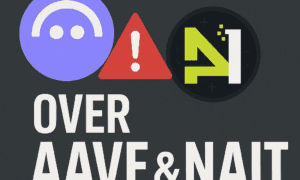Financial challenges can hit anyone. Whether it’s a job loss, a medical emergency, or simply poor planning, recovering from financial hardship takes time, patience, and strategy. The process of rebuilding stability is not about instant results but about creating sustainable habits that protect you from future setbacks. Understanding how to navigate this process can transform your relationship with money and help you regain control of your financial life.
When you face a setback, the first instinct is often to react emotionally. Panic, frustration, or guilt can make it harder to think clearly. But the truth is that financial recovery is possible with the right mindset and consistent action. This guide explores practical steps that can help anyone rebuild financial stability and regain a sense of control over their money.
Understanding Where You Stand Financially
The first step toward rebuilding stability is assessing your current financial situation honestly. You cannot make progress if you don’t know where you are starting from. Gather all your financial documents including bank statements, bills, and credit card balances. Write down what you owe, what you own, and what you earn. This may seem intimidating at first, but facing the truth allows you to plan realistically.
Create a personal balance sheet that lists all assets on one side and liabilities on the other. Assets include savings, vehicles, property, and investments, while liabilities cover debts like credit cards, loans, and overdue bills. Once you have everything laid out, calculate your net worth by subtracting liabilities from assets. Even if the number is negative, it’s valuable information because it gives you a baseline to work from.
If your debts include personal or installment loans, it’s important to review them carefully. Many people check online feedback from other borrowers through resources like Lendly reviews to better understand lenders’ reliability before considering refinancing or consolidation. Knowing which financial partners to trust can make a big difference in your recovery.
Building a Realistic Budget That Works for You
Once you understand your situation, the next step is to design a realistic budget. This isn’t about strict deprivation or unrealistic goals. Instead, it’s about aligning your spending with your priorities. Start by tracking every expense for one month. Many people are surprised by how much they spend on small daily purchases like coffee, snacks, or subscriptions they barely use.
After you have a complete picture of your spending, categorize your expenses into needs, wants, and savings. Needs are essential items such as housing, utilities, groceries, and transportation. Wants are discretionary items like entertainment, dining out, or new gadgets. Savings should include emergency funds, retirement contributions, and debt repayments. A common rule to follow is the 50/30/20 model: 50 percent for needs, 30 percent for wants, and 20 percent for savings and debt repayment.
To make your budget more effective, automate your savings. Even small automatic transfers to a separate savings account each payday can build momentum. Over time, you will adjust to living on the remaining balance and begin to see progress. Using a separate bank or financial app to store these savings can make it less tempting to spend them impulsively.
Managing Debt Strategically
Debt is one of the biggest obstacles when trying to rebuild financial stability. While it can feel overwhelming, strategic planning can help you regain control. Start by listing all your debts from the smallest balance to the largest. You can choose between two common payoff methods: the snowball method, where you pay off the smallest debt first, or the avalanche method, where you prioritize the highest interest rate.
If you are juggling multiple high-interest loans, consider consolidation options. Always research before committing to a new lender or refinancing plan. Reading borrower feedback, such as King of Kash reviews, helps identify trustworthy providers. Transparency and fair lending practices are crucial when you are already working to recover financially.
Also, contact your creditors to negotiate lower interest rates or extended payment terms. Many lenders prefer to work with customers rather than risk defaults. A polite phone call explaining your situation may lead to temporary relief, giving you breathing room to get back on track.
Establishing an Emergency Fund
One of the most important steps in rebuilding your finances is establishing an emergency fund. This fund acts as a safety net to protect you from future surprises. Ideally, you should aim for three to six months’ worth of essential living expenses. While that might seem daunting, start small. Even setting aside $25 to $50 a week can add up over time.
Place your emergency fund in a separate high-yield savings account that is easily accessible but not linked to your daily spending account. This separation creates a psychological barrier that helps prevent unnecessary withdrawals. Remember that this fund is only for emergencies such as medical bills, job loss, or urgent home repairs, not for vacations or shopping.
An emergency fund also gives you peace of mind. Knowing you have a financial cushion can reduce stress and help you make better decisions. When you are not constantly worrying about unexpected expenses, you can focus more on long-term financial goals.
Improving Financial Habits for Long-Term Success
Recovering from financial hardship is not just about short-term fixes. It requires changing daily habits that contribute to long-term stability. Start by reviewing how you handle money each month. Do you pay bills late? Do you use credit cards for unnecessary purchases? Small improvements in these areas compound over time.
Building good financial habits involves consistency. Make it a rule to review your finances every week. This regular check-in helps you stay aware of your progress and spot problems early. Avoid impulse spending by using a 24-hour rule wait a day before making non-essential purchases. Often, the urge to buy will pass, saving you money and reducing clutter.
Educating yourself also plays a crucial role. Read financial blogs, listen to podcasts, or take online courses about budgeting and investing. The more you understand how money works, the better you’ll manage it. Financial knowledge empowers you to make smarter choices, negotiate better terms, and recognize risky opportunities before falling for them.
Strengthening Credit Health
A strong credit profile is essential for long-term stability. Your credit score affects your ability to rent an apartment, get a job in some industries, and qualify for affordable loans. To rebuild credit, always pay your bills on time. Payment history makes up a large portion of your credit score, and even one late payment can lower it significantly.
Reduce your credit utilization ratio by keeping balances below 30 percent of your credit limit. If possible, pay off credit cards in full each month. Avoid applying for multiple new accounts in a short time, as too many inquiries can temporarily lower your score.
You can also use secured credit cards or small credit-builder loans to reestablish positive payment history. Over time, these responsible actions show lenders that you are trustworthy. With patience, your credit score will gradually rise, opening up better financial opportunities.
Planning for the Future
Once your finances stabilize, it’s time to plan for the future. Setting long-term goals keeps you motivated and provides direction. These goals can include saving for a home, starting a business, or preparing for retirement. Break each goal into smaller, manageable milestones and track your progress regularly.
Investing can also help your money grow beyond basic savings. Begin with low-risk options such as index funds or employer-sponsored retirement plans. Even modest contributions can accumulate significantly over the years through compound interest. Consult with a financial advisor if you are unsure where to start. They can help you design a strategy tailored to your risk tolerance and time horizon.
It’s equally important to protect what you build. Consider appropriate insurance coverage for health, life, and property. Adequate protection ensures that a single event doesn’t undo years of progress. Similarly, create or update your will and designate beneficiaries for your assets to safeguard your family’s future.
Embracing a Positive Financial Mindset
Finally, rebuilding financial stability requires a mindset shift. You must believe that improvement is possible and take consistent steps toward it. Focus on progress, not perfection. Celebrate small wins, like paying off a credit card or reaching a savings milestone. These moments reinforce your motivation and help you stay committed.
Remember that financial stability is not about how much you earn but how well you manage what you have. Patience is key because meaningful change takes time. Stay disciplined, track your growth, and be kind to yourself during setbacks. The road to recovery is rarely linear, but every effort brings you closer to lasting stability.



































